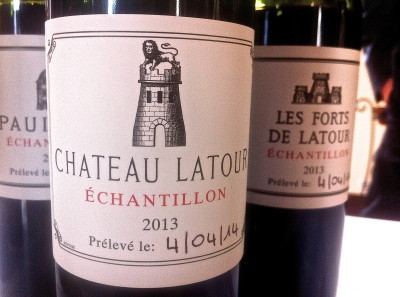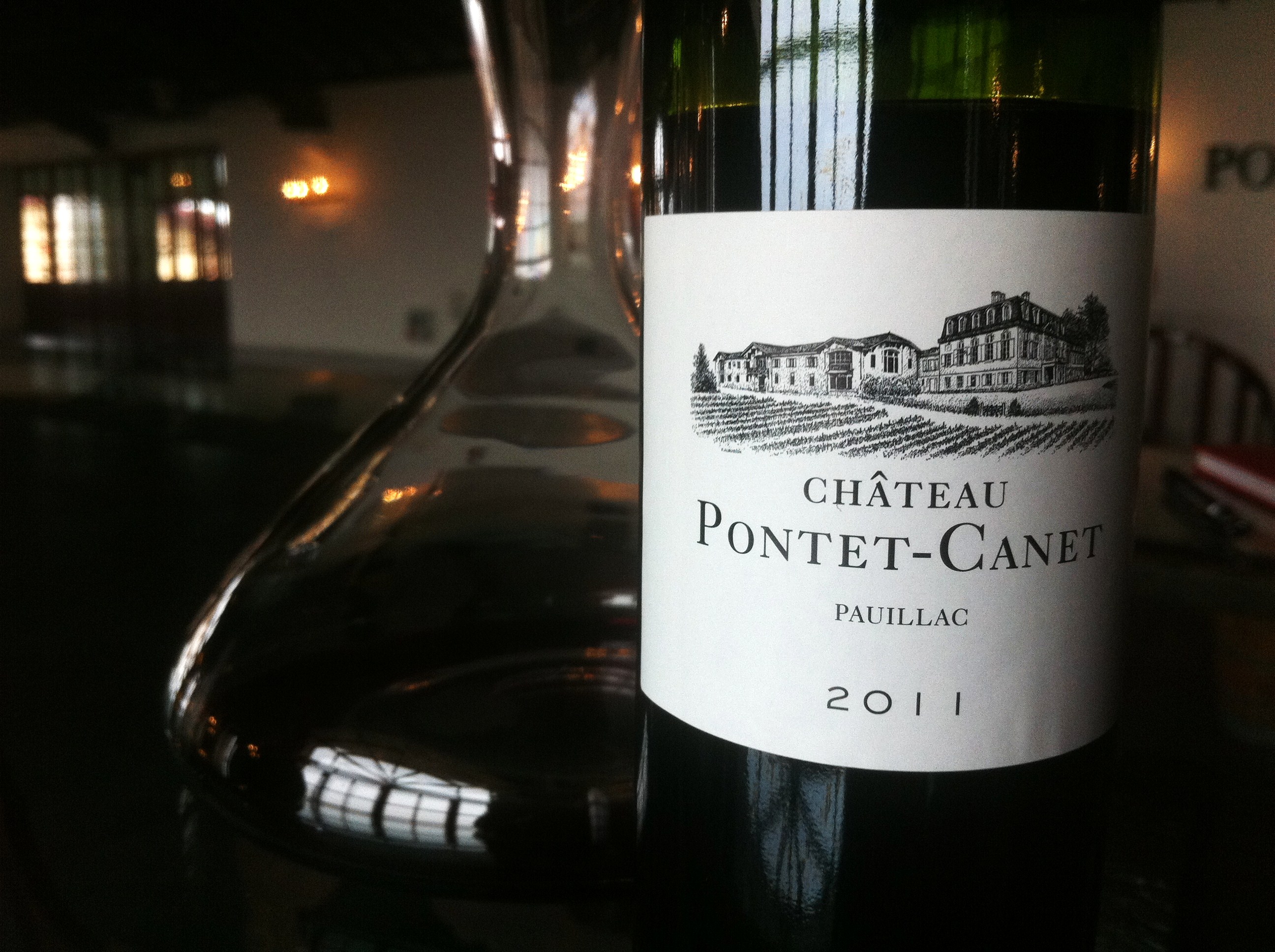Bordeaux Primeurs 2013: Château Latour
Maybe Château Latour has the edge over Lafite and Mouton in 2013 amongst the first growths. As the property has opted out of the en primeur system the wine is not available for sale, but the samples shown by the estate this April looked composed, linear on the palate and correct. The freshness and elegance of 2013 comes through, and while alcohols are comparatively low, there seems a fraction more substance and density here than at the other Pauillac properties. I’ll report in more detail on the current offerings of the château in a later post: 2004 Latour, 2006 Les Forts and 2008 Pauillac.
has the edge over Lafite and Mouton in 2013 amongst the first growths. As the property has opted out of the en primeur system the wine is not available for sale, but the samples shown by the estate this April looked composed, linear on the palate and correct. The freshness and elegance of 2013 comes through, and while alcohols are comparatively low, there seems a fraction more substance and density here than at the other Pauillac properties. I’ll report in more detail on the current offerings of the château in a later post: 2004 Latour, 2006 Les Forts and 2008 Pauillac.
The estate reports that the 2012-2013 winter was one of the wettest on record, twenty percent higher than average. It turned out to be a harbinger of what was to come. The wet and cool spring conditions delayed budbreak on both the Merlot and the Cabernet. May temperatures were low, significantly lower than the 30 year average here. Overall this delayed the growing cylce by two weeks compared with 2012. Flowering [June 17 for the Merlot and June 20 for the Cabernet] occurred in wet and rainy conditions, which affected the fruit set on the Merlot.
July and August were hot and dry, barring heavy localized thunderstorms at the end of July/early August. The generally sunny weather allowed the vines to catch up to an extent but veraison [the colour change in the grapes] was gradual and drawn out. Mid-versaion was reached in mid August, a week later than 2012. September brought hot and humid weather. The botrytis risk, present in the vineyards since the wet weather surrounding flowering, grew substantially thereafter. Before this threat, Latour was looking at picking the Merlot around October 7, but the development of botrytis meant that [as elsewhere] the vintage was pulled forward substantially, and the harvest [starting with the Merlot] began on September 27, finishing October 2. The Cabernet harvest finished on October 11. Latour described the fruit as healthy, ‘nervy in character,’ modest in potential alcohols but with good aromatics and no green qualities.
The grand vin represents just 31.5% of production this year. It is a fresh, medium weight wine. There is plenty of material on the palate, delivered in a classically composed style, and it will need time in bottle to settle. Not a problem for us of course, as Latour now takes care of this. Les Forts de Latour felt a bit tight, but should work out well in the end, while the Merlot-dominated Pauillac is elegant and round. It was an absolute belter in 2009 [and there’s still a fair bit of that still around from what I can see on merchant’s lists in the UK at least, for those who want the Latour polish at a more affordable price].
The following wines were tasted at Latour on Friday April 4, 2014. As I mentioned at the top I’ll report later on their current releases, including a very impressive 2004 grand vin.
Château Latour, Premier Grand Cru Classé, Pauillac
Deep and saturated; dark at centre; purple edge; tight and focused; cassis and blackcurrant tones; some elegance; graphite tones; intense; and quite elegant but with substance behind; nice linear style though. Correct; some density and chew to the palate [this is Latour after all] but nice, fresh finish. Good effort in the context. [95.3% Cabernet Sauvignon, 4.3% Merlot, 0.4% Petit Verdot, 12.73% alc, 63 IPT, 31.5% of production]. Drink 2020-2033. 91-93
Les Forts de Latour, Pauillac
Mid depth; purple at edge; tighter and more composed in the glass than the Pauillac; graphite and blackcurrants; chewy and tighter initially on the palate there is also attractive, creamy blackcurrant fruit too; graphite and pencil tones again; fairly tight and classical. [62.7% Cabernet Sauvignon, 35.1% Merlot, 2.2% Petit Verdot, alc 12.63%, IPT 61, 44.5% of production]. Drink 2018-2030. 89-91
Pauillac de Latour 2013
Mid depth, looser at the edge than the rest; vibrant; clean blackcurrant aromatics; cool tones; some plum and sour cherry; elegant entry on the palate; blackcurrant and plum fruit; round and easy. Blend Merlot dominated. Should be fairly early maturing. [Merlot 53.7%, Cabernet Sauvignon 45.5, Cabernet Franc 0.8%] 12.36 alc, IPT 57 24% of production].Drink 2017-2025. 86-88
Tags: Bordeaux, Bordeaux 2013, Chateau Latour, Les Forts de Latour, Pauillac, Pauillac de Latour, Premier Grand Cru Classé


